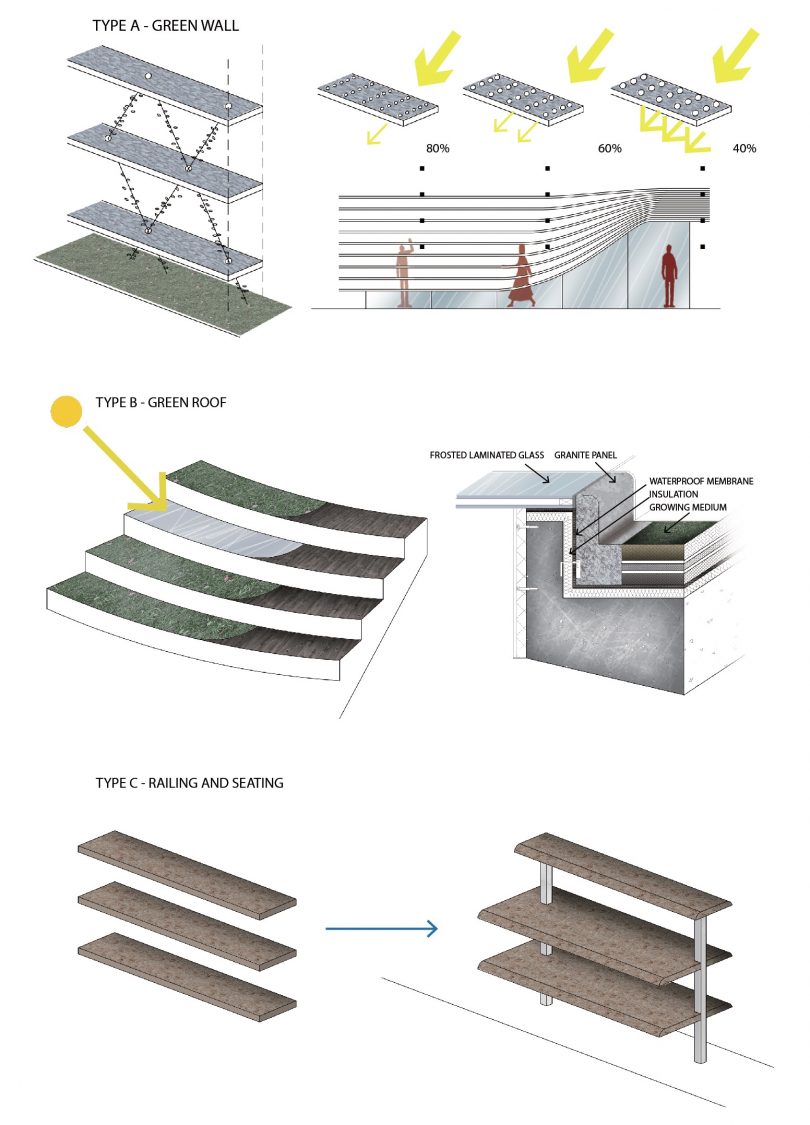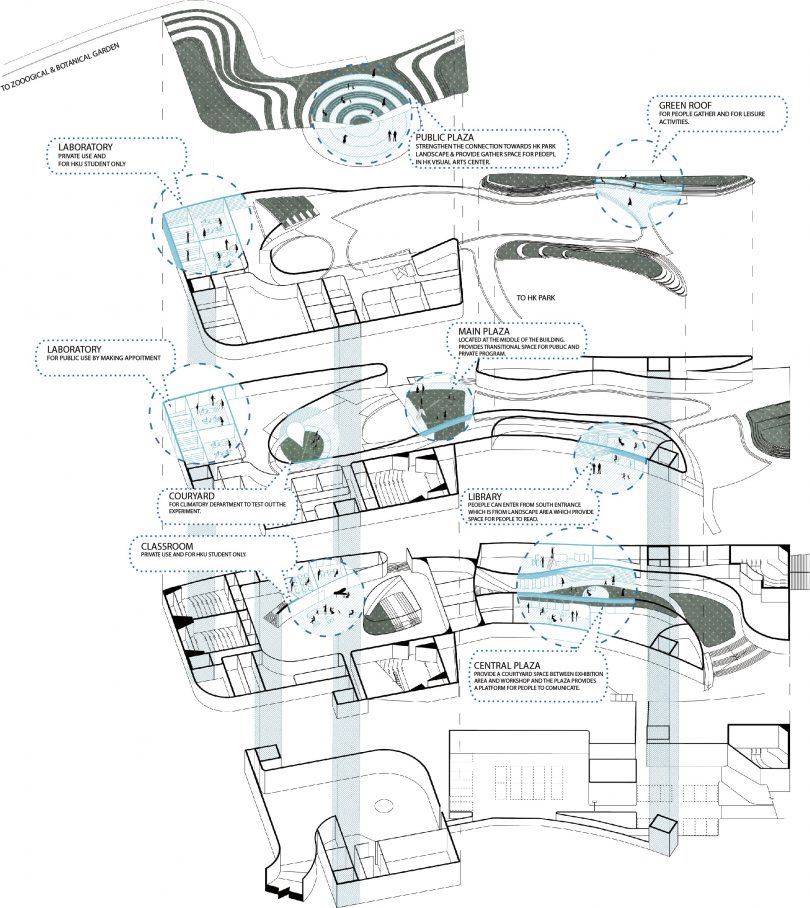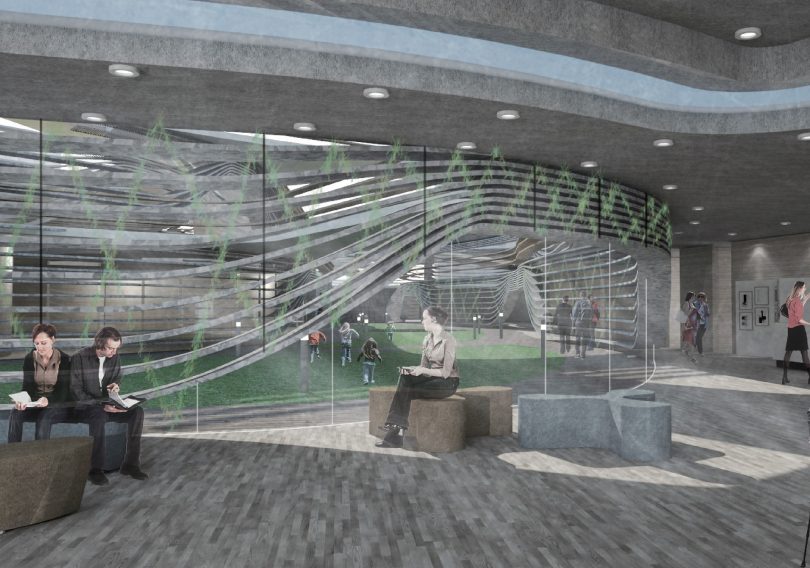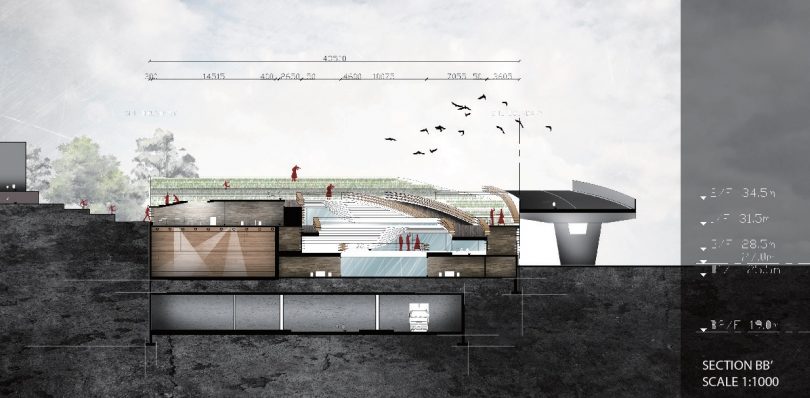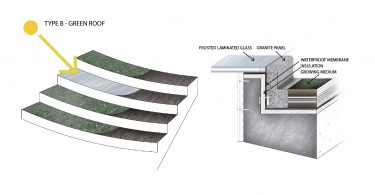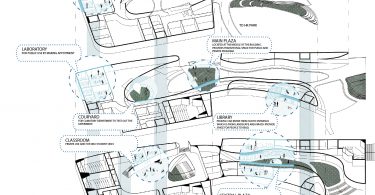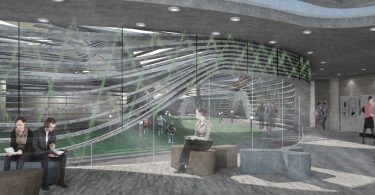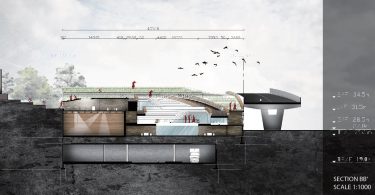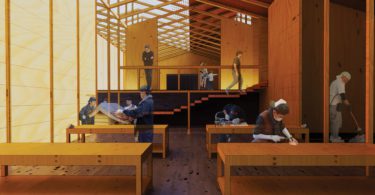The visitor centre for the Biological Science and Climatology Department is located at Admiralty, standing on the edge of Hong Kong Park. Hong Kong Park is a well-known artificial open space that acts as a barrier between the commercial area in Central and residential area in Admiralty. Local residents and office workers often pass by and spend their breaks in Hong Kong Park.
However, there is another open space located next to Hong Kong Park, and they are separated by the highway from Hong Kong Zoological and Botanical Gardens. This site offered inspiration to start planning the design on an urban scale.
CONCEPT: WALKABILITY AND LIVEABILITY
The main idea was to connect two large open spaces, Hong Kong Park and Hong Kong Zoological and Botanical Gardens, with a landscape deck connecting to the existing pedestrian footbridge, as well as redesign the existing car park under the highway into a landscape park. This could improve and strengthen not only walkability for the local residents, but also the connection between Central and Admiralty.
FORM AND FAÇADE: CONTINUITY AND VARIABILITY
The terraced form of the building was inspired from the inclined topography of Hong Kong Island with different levels. In general, this design contained two elements: ‘path’ representing walkability and ‘landscape’ representing liveability. The access was designed by considering the need of users and included vast landscape space as extension of greenery from Hong Kong Park.
The façade was designed meticulously. The horizontal louvres were made of perforated aluminium panels, with the size of the holes varying according to the daylighting control function. The façade was integrated with wire vegetation, whereby the wire would pass through the perforated aluminium panel. The density of the wire vegetation manages the visual connection of people from interior and exterior spaces, as private spaces would be surrounded with denser wire vegetation. As distinguished from the traditional barrier wall, the horizontal louvres allow cross ventilation to keep the space cooler.
The façade, handrail and terraced landscape are in continuous language. The façade could be converted into different forms according to the functions with the landscape deck connection. Possible forms include shelter, bench and more to suit the needs of users. The wire vegetation keeps spreading through the façade system all the way to the Hong Kong Zoological and Botanical Gardens by highlighting walkability and liveability.
MATERIALS
Perforated aluminium panels, concrete, timber flooring were used in the project. All materials were low cost and easy to form. Perforated aluminium panels were used in the façade as aluminium is easier to bend and form the pattern of the façade, with holes incorporated as part of the sustainable design. Wood panels were also used to create a warm feeling for interior spaces.
OVERCOMING CONSTRAINTS
The site condition was one of the challenges, as it is located at the edge of a park, next to a retaining wall and a highway. The façade of the building should be designed carefully, with the intention of letting people focus on the inside of the building. Courtyards were created in the middle of the building and fully utilised the site to make it a landscape.
It is hoped that the environmental ideas of this project can be applied to or inspire future building design in Hong Kong or other locations that share the same site conditions.
PROJECT DATA
Student Name: Ho Kwun Cheong, Anson
School: Chu Hai College of Higher Education
Programme: Bsc (Hons) in Architecture
Instructors: Dr Ken Too; Kevin Siu; David Booth
Project Name: Visitor Centre for Biological Science and Climatology Department
Location: Admiralty, Hong Kong
Site Area: 5,520 square metres
Gross Floor Area: 6,160 square metres
Number of Units/Rooms: 4 lecture halls; 12 classrooms; 4 laboratories; 4 conference rooms; 3 offices; 1 library; 1 information centre
Building Height: 10 metres (4 levels in total with basement)
Images: Ho Kwun Cheong, Anson



